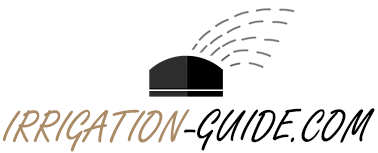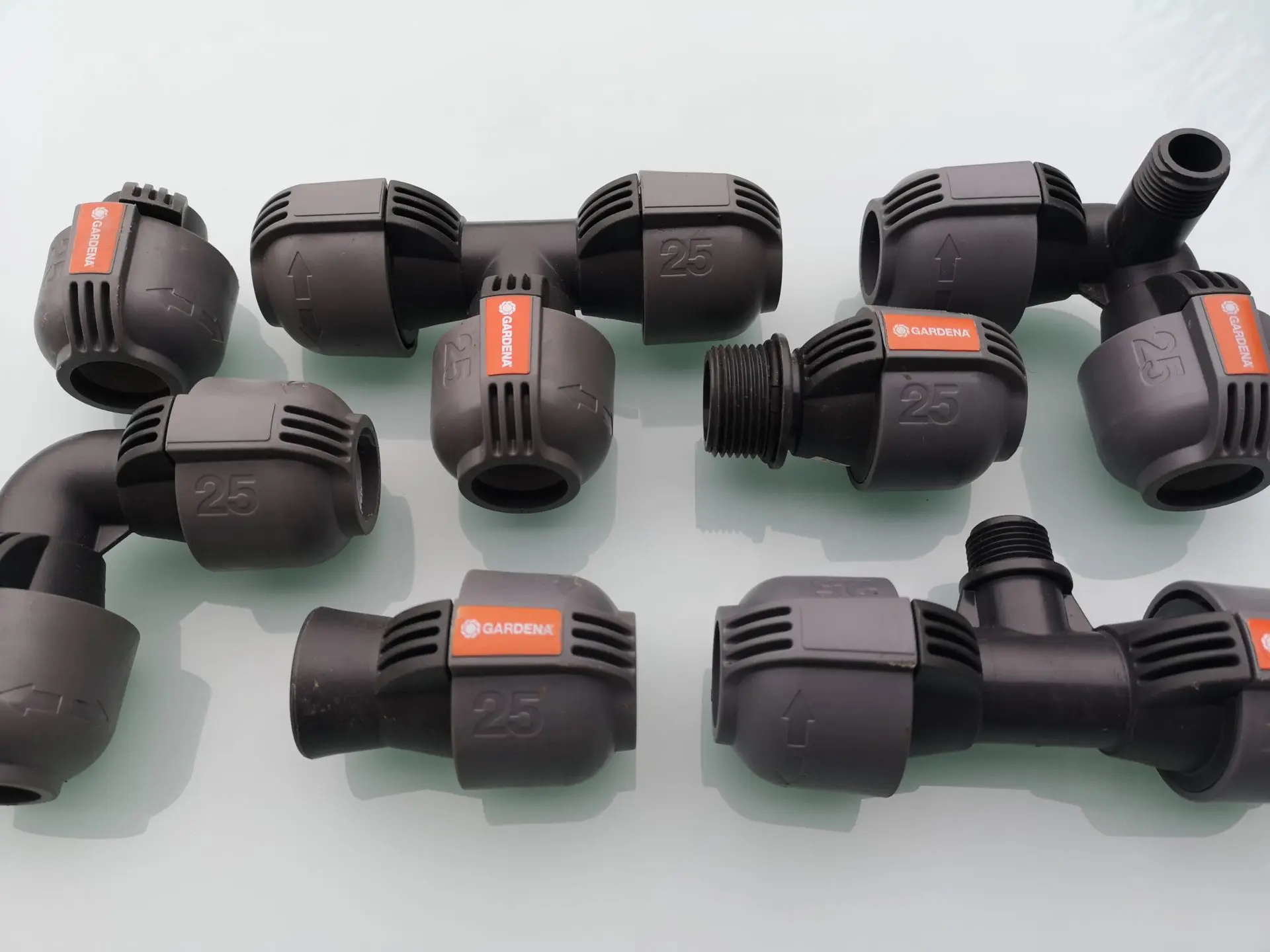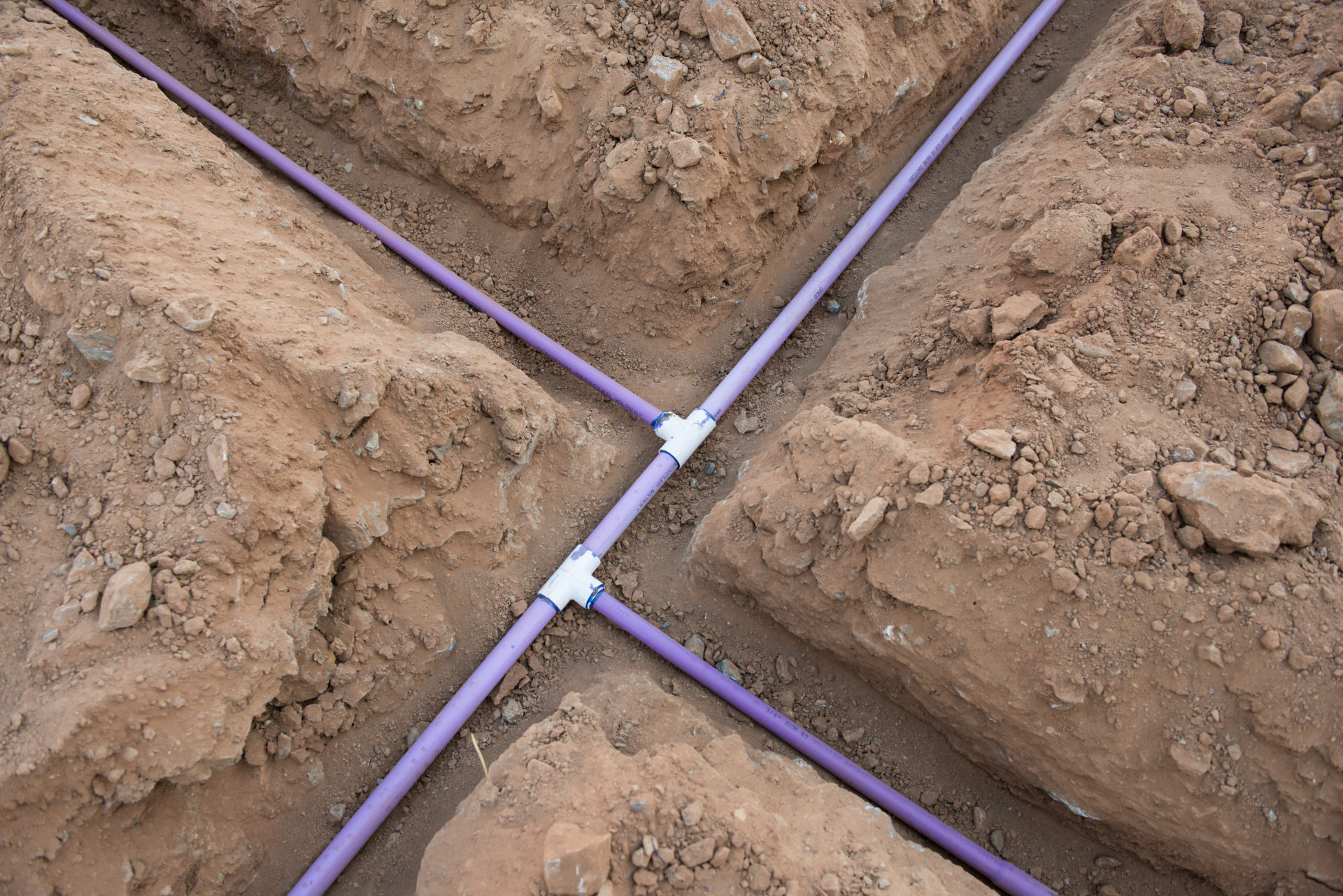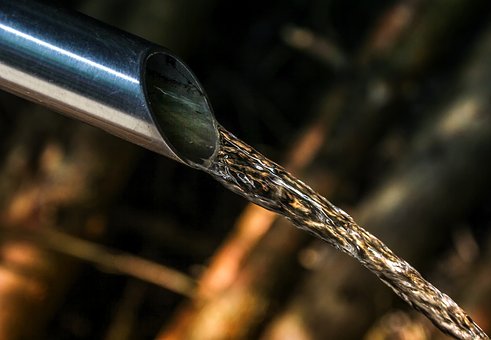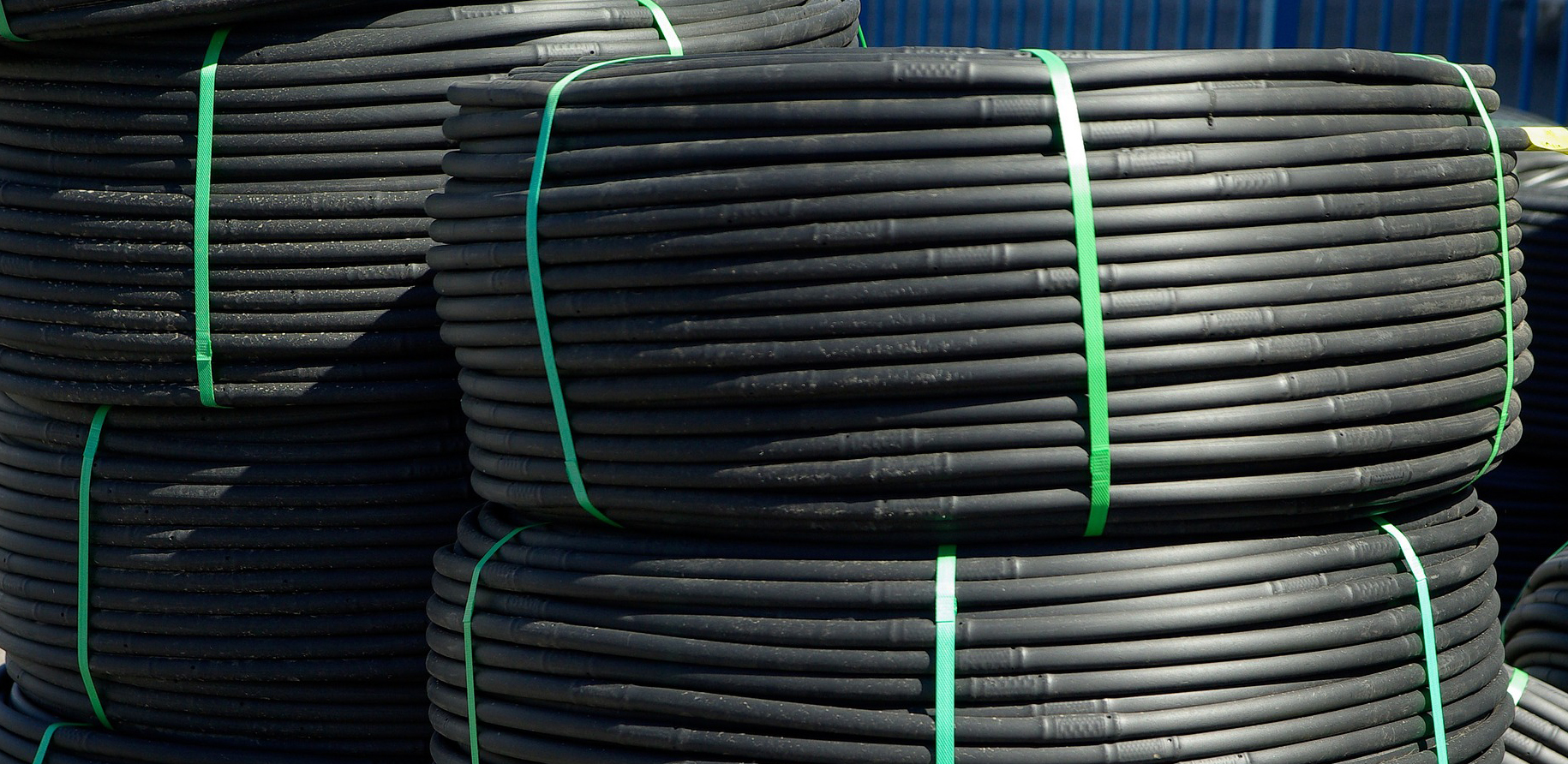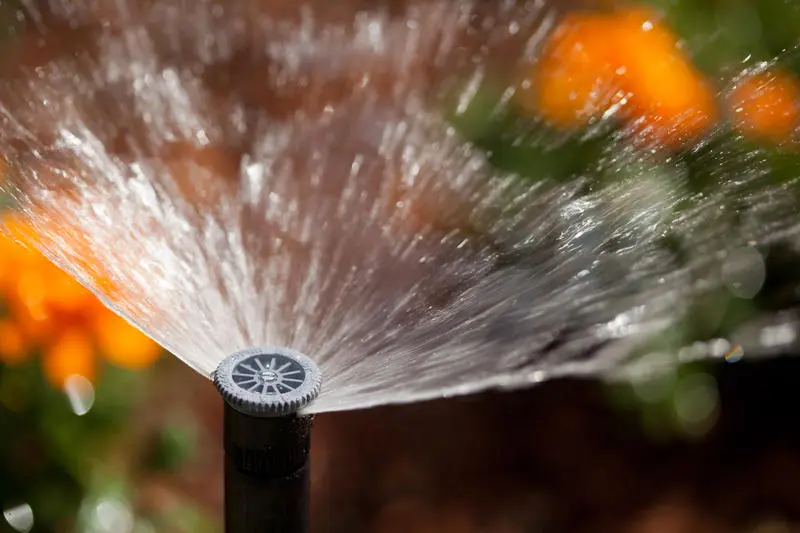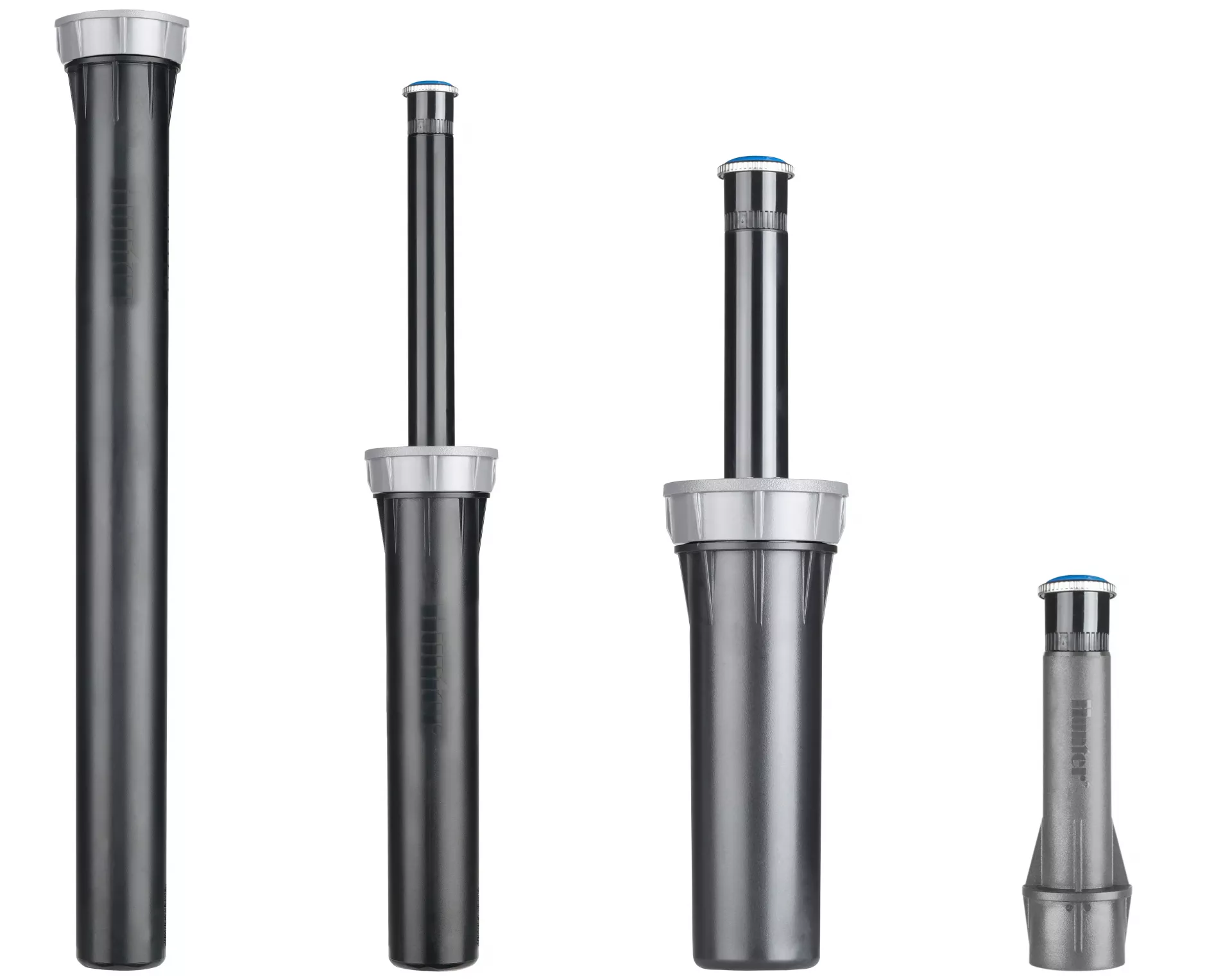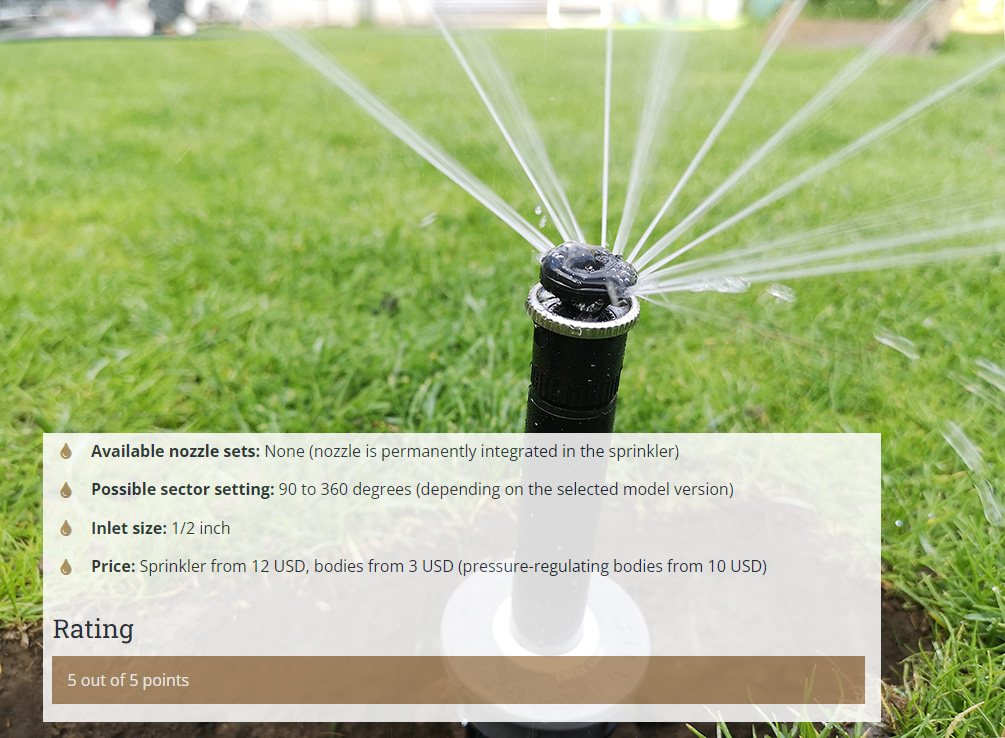This blog post provides an overview of connectors, also known as fittings, used in an irrigation system. Each with a brief description of the intended use.
The connectors shown here are clamp, push to fit or other type of connectors. With clamp connectors, the pipe is pushed into the connector with pressure and then the clamp installed in the connector is tightened using a mechanism. This ensures a secure hold even under high water pressure. Such clamp connectors or push to fit connectors with other locking mechanism are used in pipelines made of PE pipe. In PVC pipe pipelines, however, usually connectors that are glued are used. However, the basic principle of the connectors and the different types that occur are essentially the same and the company Hydro-Rain now also offers connectors with the push to connect principle for PVC pipe.
Background article: Difference between PVC and PE pipe
The connectors used in micro-irrigation systems are also the same or very similar in principle, although very simple, less pressure-resistant plug-in connectors are sometimes used here.
The function of the connectors is the same across different manufacturers and the sizes used are also standardized. Therefore in a system with Rain Bird sprinklers it can easily be used for example a Gardena or a no-name connector, or you can also mix connectors from different brands. If you want your pipeline to be of drinking water quality, then you need special connectors that have been certified for drinking water.
Since connectors are offered in different sizes, care must be taken to choose the correct size. The standard size that is usually used in the private sector for lawn irrigation is the 3/4 inch pipeline and therefore the suitable connectors are also 3/4 inch connectors.
Larger 1 inch fittings can be useful if the water pressure in the pipeline is tight and you want to reduce the pressure loss by using larger pipes. The largest and widest range of connectors for the private sector can be found for the 3/4 inch pipeline.
Adapter fitting for connecting the pipeline to a thread
Let’s start at the very beginning of the pipeline. To connect a faucet, garden pump, solenoid valve or any other threaded object to the pipeline pipe, you need an adapter fitting. This has an inlet with a diameter of 3/4 inch on the side where the 3/4 inch pipe is inserted and the push to connect connection is made, and a thread on the other side. Depending on what you connect to it, it can be an internal (female) or external (male) thread. And different sizes are possible. The usual variants are:
- Adapter fitting 3/4 inch internal thread to 3/4 inch pipe
- Adapter fitting 1 inch internal thread to 3/4 inch pipe
- Adapter fitting 1 inch external thread to 3/4 inch pipe
For a better understanding, a little information about threads: An internal thread of a certain size always needs an external thread of the same size as a counterpart and vice versa. For example, if the pump outlet has a 1 inch internal thread, then a connector with a 1 inch external thread fits. If the external faucet has a 3/4 inch external thread, you will need a connector with a 3/4 inch internal thread to connect it.
Note: If you buy components abroad, please note that there are sometimes different standards for the threads. In the USA and Canada, pipes are produced according to the Unified Thread Standard (UTS), but in Europe, Australia and many other countries they are produced according to the British Standard Pipe Standard (BSP). These two standards differ slightly in terms of threads per inch, shape and the angle the threads are cut on. Therefore, the threads of parts purchased abroad may not be compatible or not perfectly compatible with counterparts purchased domestically and as a result may not be able to be screwed together properly or sealed properly.
Examples from Amazon:
Auto Amazon Links: No products found.
L-piece (Elbow)
The pipeline is now connected to the water. The next step is to run the pipeline to the sprinklers or other places where water is needed. Sharp changes in direction may be necessary. For this purpose there is the L-piece or elbow, with which the water makes a 90 degree change in direction. As the name suggests, it has an L shape. However, not the typical L as we know it, but an L that is the same height as it is wide. At both ends of the L there is an inlet with a diameter of 3/4 inch, into which the pipeline pipe is inserted and fixed.
Examples from Amazon:
Auto Amazon Links: No products found.
Tee-piece
You need T-pieces if you want to split the pipeline into several strands. One strand can be turned into two using a T-piece, with the additional strand branching off at a 90 degree angle to the inlet. At all three ends of the tee there are 3/4 inch diameter inlets for inserting the pipeline pipe.
Examples from Amazon:
Auto Amazon Links: No products found.
End piece (End cap)
The pipeline ends somewhere. There are end pieces to close the end of the pipe. These have an inlet (3/4 inch diameter) on one side, but no outlet. The pipe is inserted into this inlet and fixed so that the water cannot go any further.
Examples from Amazon:
Auto Amazon Links: No products found.
Coupling piece
This piece connects pipe to pipe without changing direction. If you plan your pipeline with PE pipe, you usually do not need this piece during initial construction, as the PE pipe can be cut to the required length. With PVC pipe, which is sold in pieces of a given length, it will often be necessary during initial installation to extend a piece that is not long enough.
Both sides of the coupling piece have a 3/4 inch pipe opening. The purpose of this piece is to connect a new piece of pipe to an existing pipe. This may also be necessary, for example, if you want to extend an existing irrigation system after a few years or if a pipe has been damaged somewhere in the pipeline.
Examples from Amazon:
Auto Amazon Links: No products found.
With the parts described above you can build a well-functioning pipeline. What is still missing are pieces with which sprinklers can be connected to the pipeline. For this purpose, the L-piece, end piece and extension piece described above are also available in a variant with an additional 1/2 or 3/4 inch thread outlet for a sprinkler connection:
Coupling piece with sprinkler connection
As previously stated, a coupling piece serves to connect one end of the pipe to another. However, this coupling piece also has a threaded outlet at the top to connect a sprinkler. So it has not 2, but 3 oulets. 2 outlets with 3/4 inch diameter, with which it is connected to the pipeline pipe in the direction of flow and a threaded outlet vertically upwards for connecting the sprinkler. The following variants of the coupling piece with sprinkler connection are offered:
3/4 inch coupling piece with 1/2 inch male thread sprinkler connection
3/4 inch coupling piece with 3/4 inch male thread sprinkler connection
3/4 inch coupling piece with 3/4 inch female thread sprinkler connection
3/4 inch coupling piece with 1 inch female thread sprinkler connection
The thread size depends on the requirements of the sprinkler used. Sprinklers with larger water flows require larger threads than those with smaller water flows. The 3/4 inch internal thread is required, for example, to connect swing joints or drain valves.
On the market, this kind of connector is sometimes misleadingly referred to as a T-piece because, like the actual T-connector, it also has 3 outputs.
L-piece with sprinkler connection
The function is exactly the same as the L-piece described previously. It is therefore used to make a 90 degree directional swing in the pipeline. However, in addition to the directional swing, a sprinkler is also supplied with water. According to my research, these round-the-corner connectors with sprinkler connections are only offered by a few suppliers on the market. This is probably because you don’t necessarily need these connectors; you can simply put the sprinkler on a straight coupling piece with sprinkler connection and then go around the curve with a normal L-piece. The L-piece with integrated sprinkler connection actually only has the advantage of being able to do this process in one step instead of two.
End piece with sprinkler connection
The function is the same as with the normal end piece. So it is used to close the end of a pipe. The end piece with sprinkler connection is used if a sprinkler is to be placed at the end of the pipe. This connector is misleadingly sometimes also offered on the market as an L-piece.
The connectors listed up to this point are part of the standard repertoire that is usually used in a pipeline. There are also connectors that fulfill special tasks. The most interesting ones from my point of view are listed and described below:
Coupling piece with ball valve
Such a part is practical for being able to manually interrupt the water supply for a pipeline section. There is a shut-off valve in the middle of the coupling piece, which can be opened or closed using the handle on the top of the piece.
T-piece with ball valve
With such a three-way valve, the pipeline can be diverted from one line to the other line.
Reducing piece
Used when you want to connect a larger pipe to a smaller pipe. For example, in order to avoid pressure loss, the first part of the pipeline section can be constructed with a larger pipe. The reduction is usually done by one level, for example from 1 inch to 3/4 inch, but there are also pieces that reduce by several levels in one step.
Wall plate
The water pipe is inserted into the elbow on one side. At right angles to this there is a screw-on option with which the wall plate can be attached to the wall or to another suitable surface. A thread also branches off at a right angle. You can attach a faucet to this, for example.
Swing joints
Swing joints are a whole category of their own. These make the connection of sprinklers to the pipeline even more flexible and easier and make it easier to set sprinklers in difficult terrain. Instead of connecting the sprinkler directly to the pipeline using a connector with a sprinkler connection, the sprinkler is connected to the pipeline using a flexible, movable intermediate piece (“swing joint”). How exactly this works and what advantages it brings is discussed in a separate article:
Blog post: How swing joints work and what benefits they bring
Examples from Amazon:
Auto Amazon Links: No products found.
Tapping saddles
A possible alternative to using connectors with a sprinkler outlet are tapping saddles. Instead of leading the pipeline into the connector and continuing through the other end of the connector, a tapping saddle is mounted on the outside of the pipe and the pipe is drilled through at this point, creating a water outlet.
Examples from Amazon:
Auto Amazon Links: No products found.
